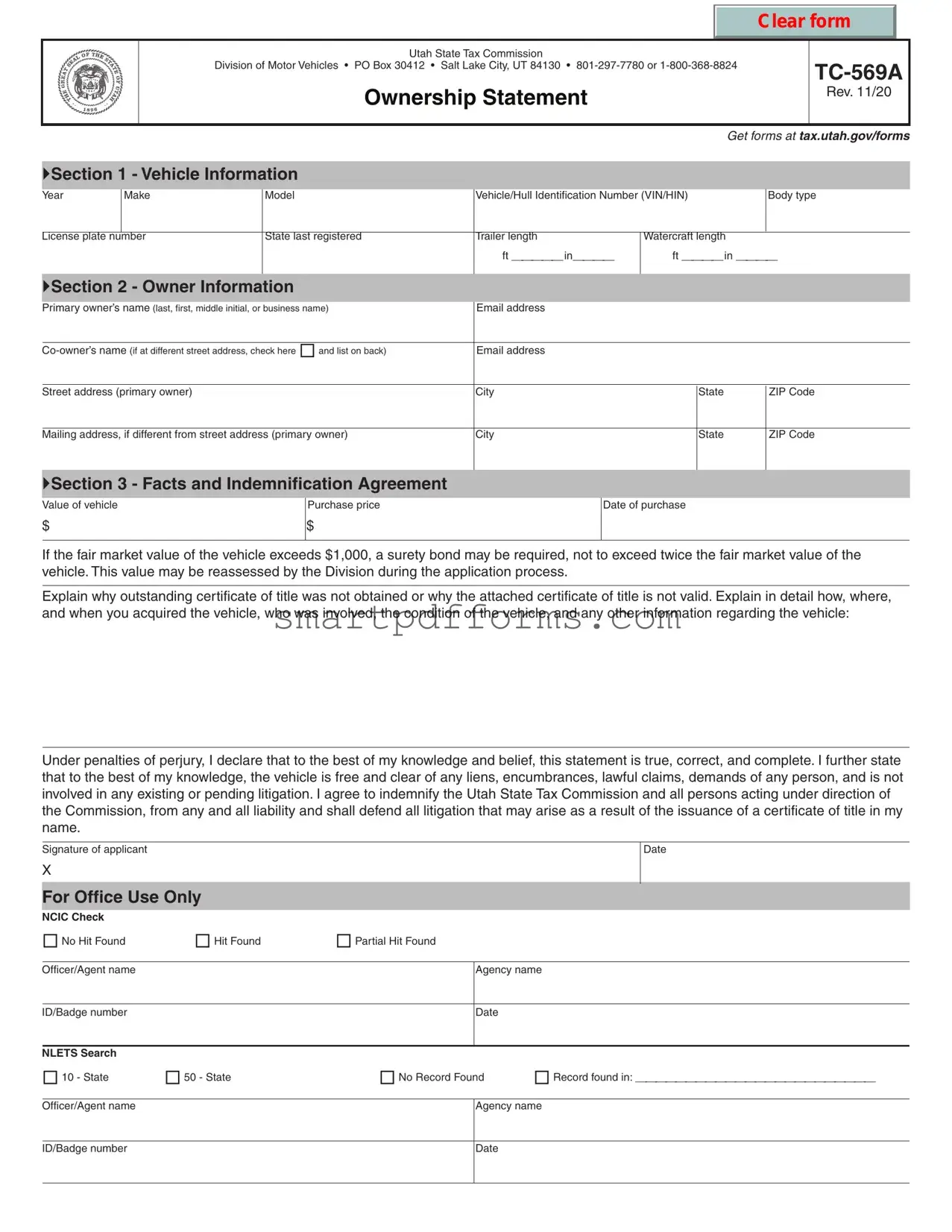Utah State Tax Commission
Division of Motor Vehicles • PO Box 30412 • Salt Lake City, UT 84130 • 801-297-7780 or 1-800-368-8824
Ownership Statement
Get forms at tax.utah.gov/forms
Section 1 - Vehicle Information
|
Year |
Make |
Model |
Vehicle/Hull Identification Number (VIN/HIN) |
Body type |
|
|
|
|
|
|
|
|
|
License plate number |
State last registered |
Trailer length |
Watercraft length |
|
|
|
|
|
ft _____in____ |
ft ____in ____ |
|
|
|
|
|
|
|
|
|
Section 2 - Owner Information |
|
|
|
|
|
|
|
|
|
|
|
|
|
Primary owner’s name (last, first, middle initial, or business name) |
Email address |
|
|
|
|
|
|
|
|
|
|
|
|
Co-owner’s name (if at different street address, check here and list on back) |
Email address |
|
|
|
|
|
|
|
|
|
|
|
|
Street address (primary owner) |
|
City |
|
State |
ZIP Code |
|
|
|
|
|
|
|
|
|
Mailing address, if different from street address (primary owner) |
City |
|
State |
ZIP Code |
|
|
|
|
|
|
|
|
Section 3 - Facts and Indemnification Agreement
Value of vehicle |
Purchase price |
$ |
$ |
|
|
If the fair market value of the vehicle exceeds $1,000, a surety bond may be required, not to exceed twice the fair market value of the vehicle. This value may be reassessed by the Division during the application process.
Explain why outstanding certificate of title was not obtained or why the attached certificate of title is not valid. Explain in detail how, where, and when you acquired the vehicle, who was involved, the condition of the vehicle, and any other information regarding the vehicle:
Under penalties of perjury, I declare that to the best of my knowledge and belief, this statement is true, correct, and complete. I further state that to the best of my knowledge, the vehicle is free and clear of any liens, encumbrances, lawful claims, demands of any person, and is not involved in any existing or pending litigation. I agree to indemnify the Utah State Tax Commission and all persons acting under direction of the Commission, from any and all liability and shall defend all litigation that may arise as a result of the issuance of a certificate of title in my name.
For Office Use Only
NCIC Check |
|
|
No Hit Found |
Hit Found |
Partial Hit Found |
NLETS Search |
|
|
|
10 - State |
50 - State |
No Record Found |
Record found in: ________________________ |

